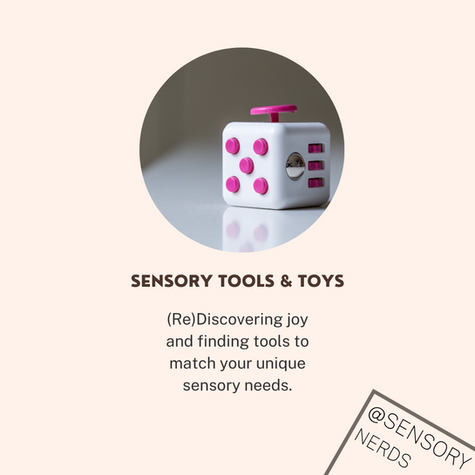What is a Sensory Lifestyle?
- sensorynerds
- Jan 26, 2023
- 3 min read
A sensory lifestyle is a way of living that meets your unique sensory needs in a consistent and responsive way. Dr. Lucy Jane Miller defined a sensory lifestyle in her 2014 book Sensational Kids as an integrated approach in which sensory solutions are applied throughout daily life. She wrote that a sensory lifestyle is different from a sensory diet, which is a list of "specially selected sensory activities."
Developing a sensory lifestyle requires a deep understanding of why and how sensations impact an individual so that knowledge can be applied in everyday situations. Rather than being a set of quick tips and tricks, it works on a deeper level to support regulation, connection, and function. Sensory lifestyle design supports everyone's access to living a meaningful and satisfying life.
The 5 Pillars of a Sensory Lifestyle

1. Self-Acceptance & Advocacy
We need to accept sensory differences, rather than attempt to cure, fix, or magically stimulate or desensitize sensory responses into a "normal" response level. Everyone has sensory preferences and needs. Get to know what yours are, then learn how to talk about them with others in a productive way.
2. Good Environmental Fit
Whether you realize it or not, what (and who) surrounds you has a tremendous impact on your mood and energy level.
Think about where you feel most comfortable and at ease in the world. Is it your bedroom? Your car? A friend's house? The living room couch? What is it about that spot in the world that works so well for you?
Now think about where you think most clearly and seem to get the most work done. Where do you tap into your creativity or experience a flow of both ideas and actions? What is it about that spot that supports your concentration and attention so well?
3. Supportive Connections
Humans are inherently a social species. It's been necessary for our survival and growth as a species. We all need to feel supported and connected in some way. Extroverts need a lot of time in connection with others, while introverts tend to need less. Some people prefer deep soulful connections, while others are more comfortable with more casual and fun interactions. Some people are drawn to other humans, while others feel better connected with animals or nature.
4. Sensory Tools & Toys
Sensations are powerful and fundamental to the way we experience and perceive everything. The way we detect and process sensations is a unique and individualized experience. Get acquainted with what you like and dislike on a sensory, pre-judgment level. Discover and rediscover what brings you pleasure and enjoyment. Figure out what soothes and excites you. Then, find ways to get those sensations whenever and wherever you need them.
5. Meaningful Tasks
Spending time on what matters to you brings a sense of purpose and fulfillment. Each person has a unique set of interests, skills, and roles. Each day brings a unique set of opportunities and challenges. Engaging regularly in tasks that are meaningful to you may at times take some trial and error. With different stages of life, what brings you meaning will change or evolve. At times, you may need support to problem solve access barriers or explore new interests.
A Sensory Lifestyle can Feel Like "Sensory Calculus"

The five pillars of a sensory lifestyle combine to create and sustain a rich and meaningful life. There are a lot of variables to consider. Each person's unique sensory differences interact with each environment and situation differently, and everyone changes and evolves over time. As the saying goes, "The only constant is change." Because of that, figuring out how to integrate all of these pillars in a flexible, ever-evolving way can feel like "Sensory Calculus" -- quite complex and possibly even overwhelming.
Our advice is to break things down into manageable chunks and get support. It takes time and energy to work through all of this, but it is well worth the effort.
Written by Sarah Norris, MS, OTR/L, CMBTP, founder of The Sensory Coach and co-founder of The Sensory Nerds.






















Amigo Tyres is a Rocklea based store that supports truckers, families, and businesses with tyre replacement, repair, and mobile services. Visit the best truck wheel alignement in Rocklea !
Visit: https://amigotyres.com.au/services/tyre-rotation-service-in-rocklea , https://amigotyres.com.au/services/wheel-alignment-service-in-rocklea